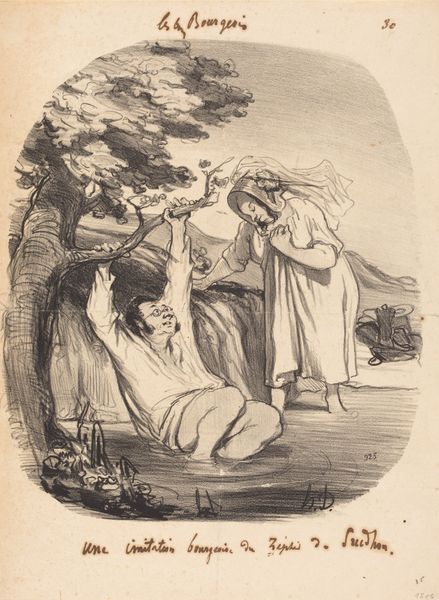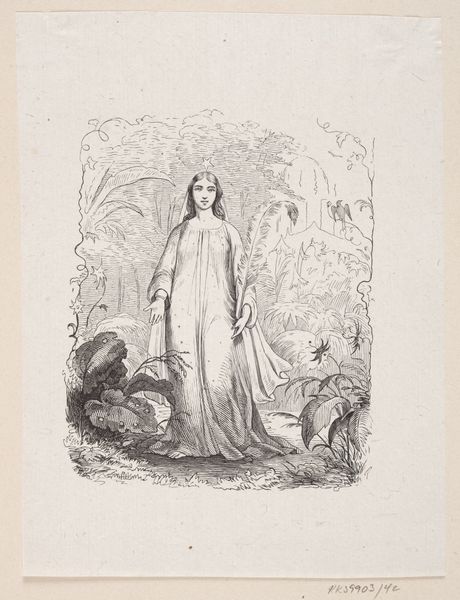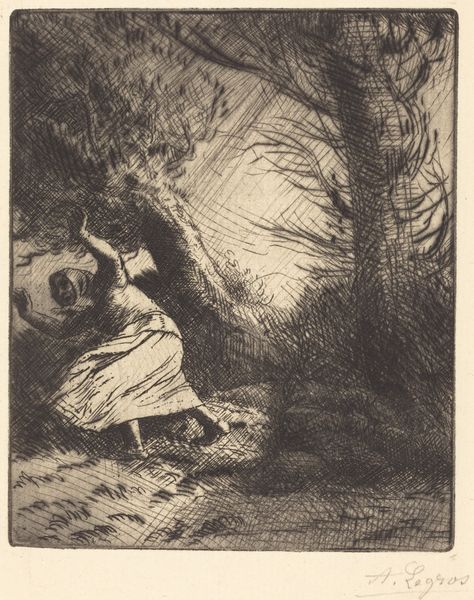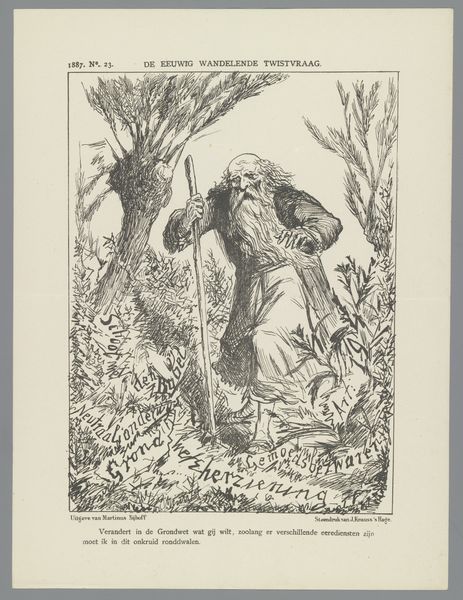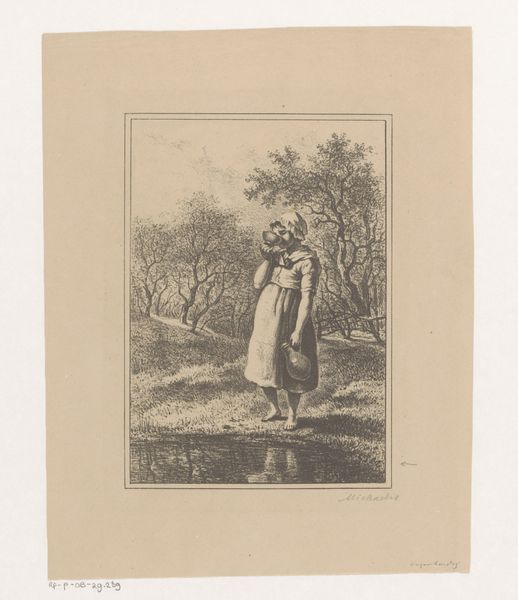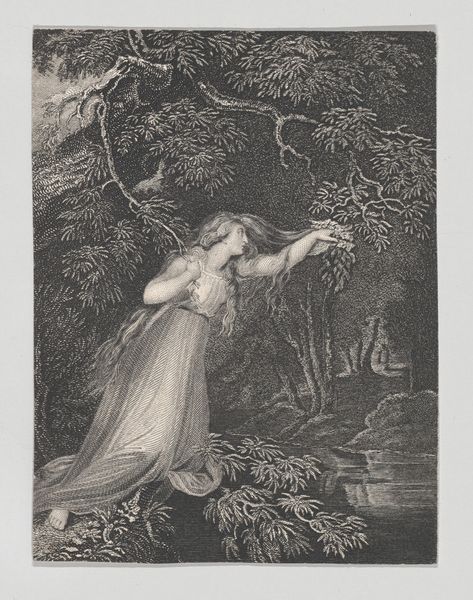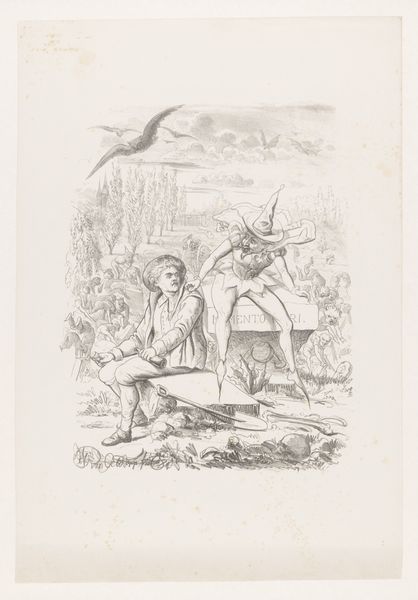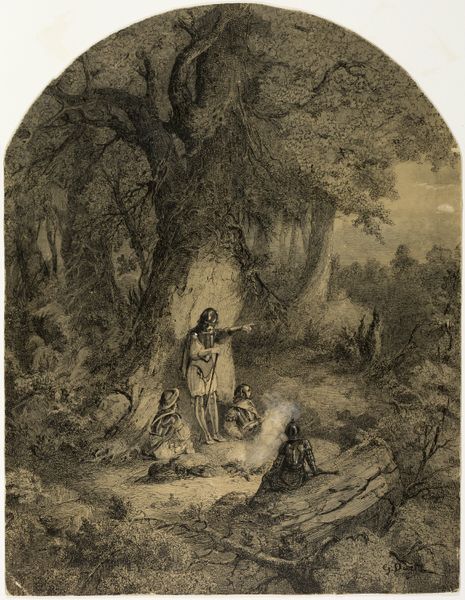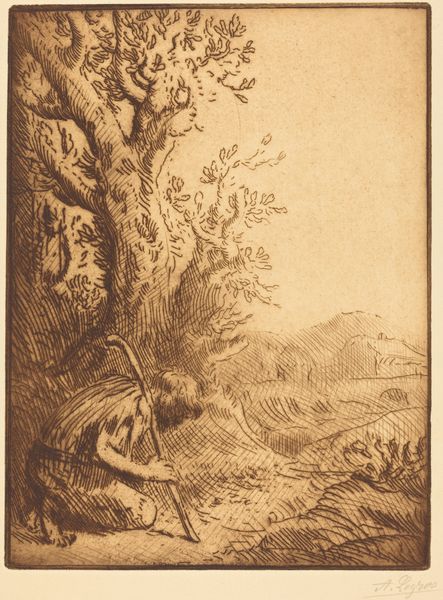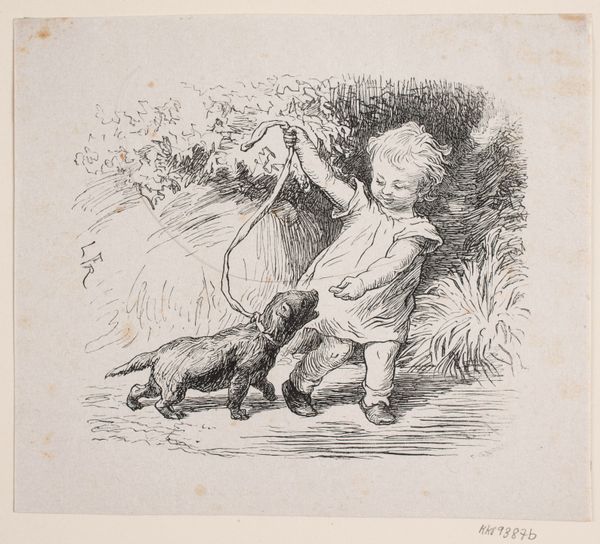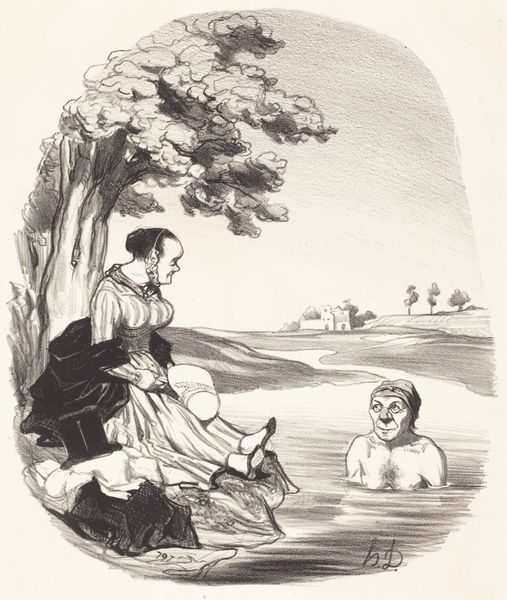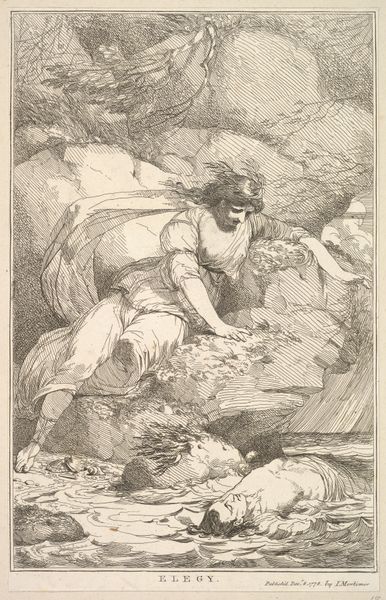
Illustration til "Tommelise" i H.C. Andersen, "Eventyr og Historier", Bind 1 1870 - 1873
0:00
0:00
Dimensions: 126 mm (height) x 95 mm (width) (bladmaal)
Curator: H.P. Hansen's Illustration for "Thumbelina" transports us into a delicate realm, wouldn't you agree? It’s rendered in ink and likely dates from 1870-1873, specifically as a piece for Hans Christian Andersen’s tales. Editor: It has such a gentle quality, almost hesitant. The pen work, particularly the dense strokes around the butterfly and reeds, gives it a brooding sense. Curator: Notice how Hansen positions Thumbelina, almost center stage. The relatively large butterfly invites her toward it; she seems very tiny against the natural world behind her. Do you see an idealized romanticism in the natural elements and their connection to Thumbelina herself? Editor: The way Hansen has used his tools is central. Note the precision of each line, a testament to meticulous craftsmanship and its position within a culture of handcraft rather than the increasingly industrialized production that was expanding during Hansen's career. I also consider the role of institutions during this period. Publishing houses played a major role in disseminating romantic illustrations, popularizing artists such as H.P. Hansen while defining common cultural themes such as innocence or natural harmony. Curator: I hadn't considered it in light of that! You make an interesting point about craftsmanship and cultural expectation. Considering Hansen’s execution, the interplay between line, form, and value crafts a very detailed and evocative space despite the minimalist quality inherent to the medium itself. What of its deeper symbolism, do you have any thoughts? Editor: As for that aspect, one could explore this illustration from the vantage of Thumbelina being trapped by forces outside of herself. It makes me think of how female artists often challenged domestic expectations placed on them to become recognized for the very art they produced in a domestic, constrained environment. In some sense, Thumbelina *is* H.P. Hansen. Curator: Your insights have recontextualized what, at first, struck me as simple aesthetic observation, but which I am beginning to consider in an altogether new perspective. I appreciate the reframing of social position, Editor, as I hadn't seen this at all. Editor: It’s what makes experiencing artwork collaboratively enriching. Thanks!
Comments
No comments
Be the first to comment and join the conversation on the ultimate creative platform.
